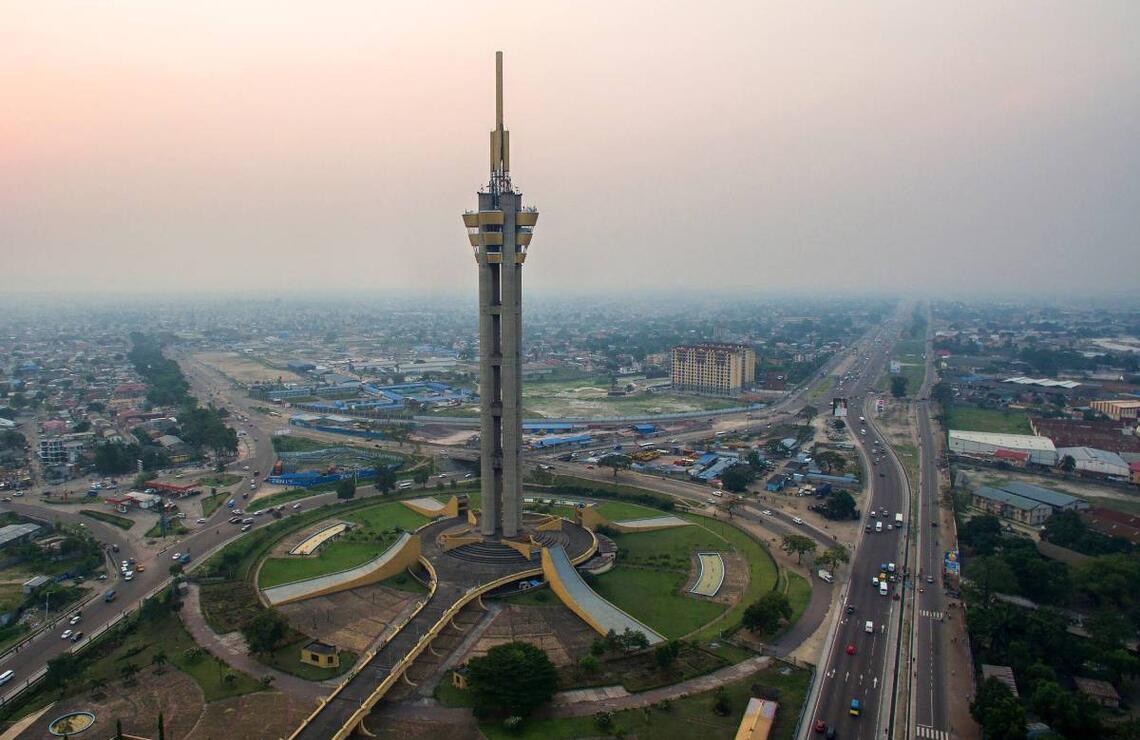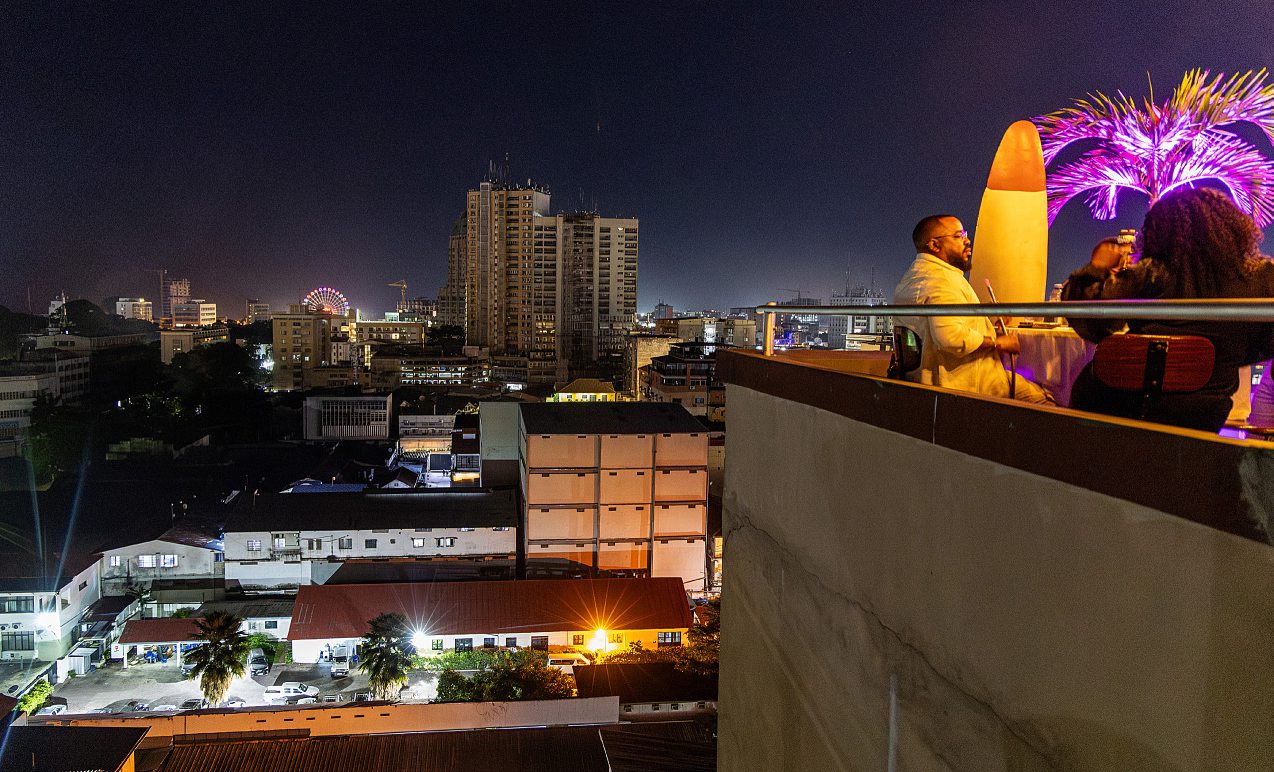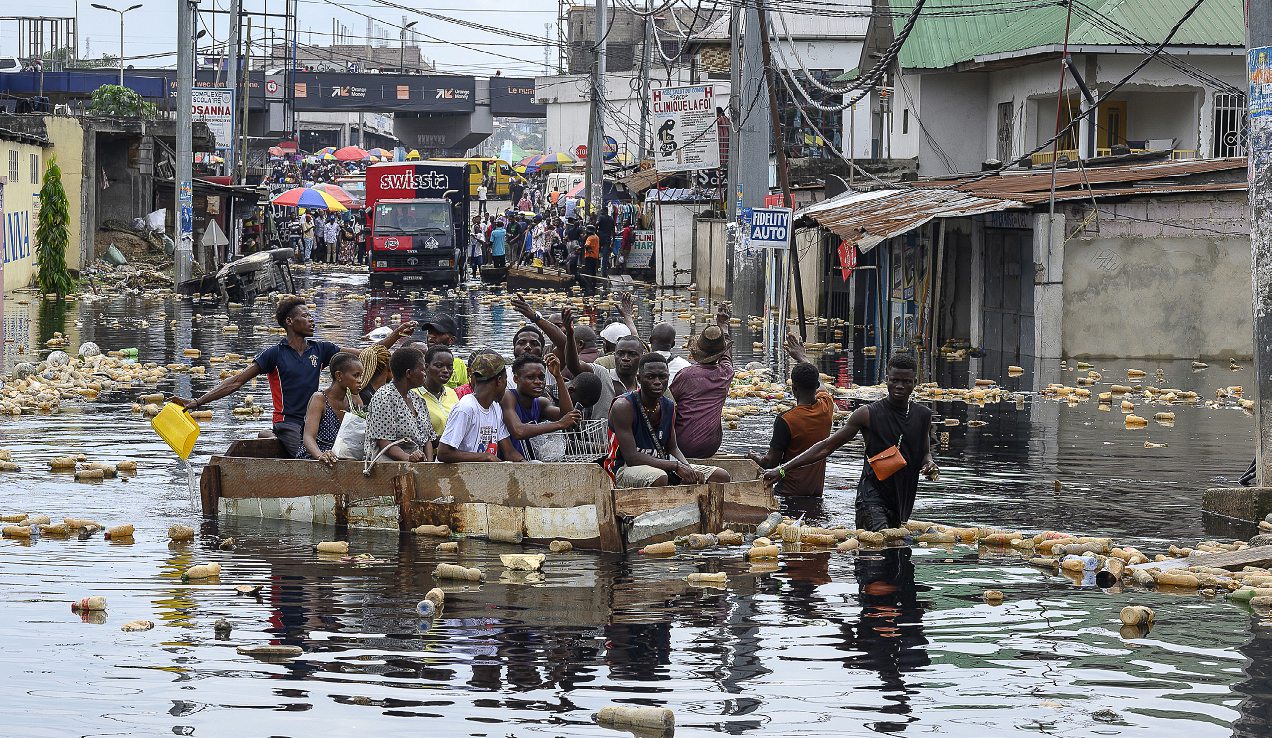
DR Congo
Kinshasa on the edge
Welcome to ‘Kin’, home to nearly 20 million people and the largest French-speaking city in the world. Huge, seductive, chaotic and dangerous, the capital dances beneath a volcano. And searches for a viable future.
On the opposite side of the Congo River and its reefs, less than seven kilometres away as the crow flies, Brazzaville seems so small and calm. There is still no bridge between the two closest capitals in the world, and it is clearly not going to happen anytime soon. The ferry and the legendary “beach” remain the norm, along with customs abuses of all kinds. This is Kinshasa, ‘Kin’, the immense capital of the equally vast DR Congo. A giant urban sprawl, with a population of between 18 and 20 million, officially spread over 9,965 km², of which only 860 km² is urbanised. It is one of the densest and most populous cities in the world, the largest French-speaking city, ahead of the Greater Paris conurbation. It is the third or fourth largest in Africa, competing with Lagos, Cairo and the Johannesburg-Pretoria conurbation. What strikes the traveller is the sheer size, the urban disorder and the clash of extremes. Luxury hotels attract a shady population of more or less legitimate entrepreneurs and international pirates dreaming of striking it rich. Large, air-conditioned shopping centres offer the best the consumer world has to offer. A huge new cultural centre, made in China, has just been built. Gleaming 4x4s jolt along potholed roads. Endless neighbourhoods, ‘spontaneous’ and anarchic housing stretches to the horizon. And then there is the omnipresent sound of music, that of Fally, Ferre Golla, Werrason and Papi Koffi Olomidé. There is also the noise of churches, of evangelical pastors promising a better life. There is incredible resilience, with an out-of-control city that seems to have its own mysterious rules of self-stabilisation and survival.
This city did not appear out of nowhere. It has a long history. The area has been inhabited for ages by Bantu peoples, particularly the Batéké, who settled on both sides of the river. Apparently, there was once a village here called Nshala. In 1881, the famous explorer Henry Morton Stanley founded a trading post, Leopoldville, named after the King of Belgium. The Matadi-Leopoldville railway, completed in 1898, connected the settlement to the Atlantic coast. The city became the capital of the colonial administration. By the end of the 1950s, Leopoldville had a population of nearly 300,000 and had established itself as the cultural centre of Central Africa, with the birth of rumba, the spread of Lingala and the development of nationalism. It was here, on 30 June 1960, that the country's independence was proclaimed. It was here that Patrice Lumumba delivered his historic speech before the King of Belgium, responding to Baudouin's paternalistic remarks. Addressing the Congolese people directly, Lumumba issued a formal indictment of the colonial system. Independence was not given but won through struggle and sacrifice: “Who will forget [...] the shootings in which so many of our brothers perished, the dungeons into which those who no longer wanted to submit to the regime of injustice, oppression and exploitation were brutally thrown?” The rift was official, and Patrice Lumumba's tragic fate was already being written in that defining moment. In 1966, as part of his campaign to restore authenticity, Mobutu Sese Seko, then a general, renamed the city Kinshasa, after its original local name, in order to erase the colonial mark.
THE CHALLENGE OF URBAN PLANNING IN KINSHASA

The ‘authentic’ capital then entered a cycle of continuous growth without any real change in colonial urban planning. Without any supporting infrastructure. Kinshasa was suffocating within its old boundaries. Between 1990 and 2025, the population increased fivefold, from less than 4 million to more than 17 million. Demographic growth was a major factor. But so was internal migration. Insecurity, conflict and wars linked to the Rwandan genocide caused an intense rural exodus to the ‘benefit’ of a capital city that was already on its last legs. The megalopolis was poor and under-equipped. It continued to expand and grow every day. Each year, it gained over 700,000 additional inhabitants. Here and there, a few beautiful, ambitious towers are rising, such as the new Hilton on the riverfront, the Kinshasa Financial Centre and the twin residential towers in the La Gombe district (the owners of which are the subject of much speculation). Luxury compounds are being built, and prices for high-end real estate are almost as high as in Paris or Tokyo. But in ‘Kin la Belle’, informal, spontaneous housing prevails, with cités without water or electricity. Apart from a few major boulevards, including the famous 30-juin and the equally famous Patrice-Lumumba, the adjacent streets are often potholed, even in the ‘chic’ neighbourhoods. The rainy season heralds a season of hardship, with lakes forming and urban rivers sweeping away almost everything in their paths. Traffic jams are a daily nightmare. The crossroads, usually without traffic lights, are the ultimate test. The Kinois spend their days trying to get around, to get from home to work, to take their children to school. In Kinshasa, sleep has become a political issue. One can never be ill or pregnant in a car.
The authorities are looking for a magic solution, most recently reversing the flow of traffic, but with little effect. The reality is there, undeniable. What is lacking is infrastructure: bridges, flyovers, expressways, traffic lights, paved streets. On 22 June 2024, President Félix Tshisekedi launched construction work on the east, south-west and east-west ring roads to relieve congestion in the city centre. and get people out of the city. The 63-kilometre route is a China-Congo project costing $300 million. It would be a real revolution if the project were to reach completion.
Above all, the city faces the constant threat of flooding. Kinshasa has spread out in the lower Congo basin, in an alluvial plain surrounded by high hills and criss-crossed by dozens of rivers. Rainfall is naturally heavy. The chaotic management of mountains of rubbish, the lack of waste disposal sites, the absence or congestion of drainage channels and the unregulated housing development maximise the recurring risk of human tragedy.
A LAND RICH IN DIFFICULTIES

In early April, torrential rains fell on the capital. Entire neighbourhoods were flooded. At least 40 people were reported dead. Twenty kilometres from the city centre, Ndjili Airport stands as the perfect metaphor for the dead ends of Kinshasa. Unless it's the middle of the night, it can sometimes take three, four or five hours to get there or back, depending on the driver's skill and the traffic situation, which can be desperate. Getting there involves crossing the large, working-class neighbourhood of Ndjili, among other places. National Road 1 is jammed with motorcycles, trucks, rickshaws and buses that are more or less rickety. It is constantly gridlocked. The area is particularly dangerous and prone to flooding. On 6 April, heavy rains caused the Ndjili River to burst its banks. It washed away part of a dilapidated bridge, which had already been renovated in 2018, cutting off access to the airport. Passengers were stranded for hours. Above all, it was the neighbouring districts that suffered the most casualties, with at least 30 deaths. Because the people of Kinshasa are resourceful, some travellers used the river route to reach the airport for a few days, and others even flew on private flights from Ndolo aerodrome, located in the heart of the city and used only for light aircraft. This decision was taken after the tragic accident on 8 January 1996 when an overloaded Air Africa Antonov failed to take off and crashed at the end of the runway into a market in Barumbu. Around 300 people were killed in one of the worst air disasters in Africa.
The airport itself is quite a story. A large, patched-up hangar, far from meeting the ambitions and needs of a country where air travel is supposed to be the primary means of transport. Travellers have to pay a $50 tax, supposedly to maintain the premises in their current state. An extension and renovation project has been in the pipeline for years. Internal wrangling over the awarding of contracts, competition between Chinese and Turkish companies, the overall cost of the project and its location make it a particularly risky venture. However, despite the dilapidated state of the current terminal, the tarmac is congested with large aircraft from major international airlines, private jets and 747 cargo planes... Clearly, in Kinshasa, business is business, despite the obstacles.
Poor Kinshasa is also the economic gateway to the Democratic Republic of Congo. With a population of around 110 million, covering an area of 2.3 million km2, approximately the size of Western Europe, it is a crossroads between Africa's north, east, west and south. It borders nine countries - including a 2,500 km border with Angola - has 26 provinces, an astonishing ethnocultural diversity, quasi-nations and indigenous peoples, all of which can be found here in the capital, the Tower of Babel of the Republic. The DRC is above all a nominally rich country: it is a land of mines, of cobalt, copper, zinc, gold and, undoubtedly, oil and gas. In Kinshasa, money from the country's underground resources circulates from bank to bank, from hand to hand, from company to company, from adventurer to adventurer, from party to party. During the day, people mine, calculate and drill. At night, they meet for drinks and dinner, minds filled with the money to be made from mining. A handful of idealists talk about the DRC's other real treasure. The country is home to a huge chunk of the world's natural heritage, with 60% of the Congo Basin's forests. It's a vital carbon sink for the whole planet. Yet every year, the DRC loses half a million hectares of this vegetation cover. It is also a country of rivers, with tremendous hydraulic potential, as exemplified by the long-awaited and probably impossible renovation and extension of the Inga dams.
Since the end of the Mobutu era and the Rwandan genocide, it has also been a nation more or less continously at war. In late January, demonstrators attacked foreign embassies, those of countries suspected of supporting the M23 rebellion. Goma and Bukavu fell to the rebels in early February. Since early April, there has been talk of peace. Kinshasa remains true to itself. So close, yet so fragile and so far from the front lines, at the heart of the republic and on the fault lines of conflict. But also autonomous, absorbed by its immensity and its power.
THE REFLECTION OF NATIONAL SHORTCOMINGS
For Kin, this is the challenge. How can it avoid collapsing under its own weight? Faced with demographic and spatial expansion, the prospect of a gigantic megalopolis with over 30 or 40 million inhabitants in the coming years, and exponential demand for infrastructure and investment, can the city still be saved and become a model for urban renewal in Africa? The elite, those at the top, are torn between a guilty “every man for himself” attitude and the imperative of rethinking the city. Programmes for sanitation, road construction and urban expansion (complete with dreams of a new city, Kia Mona) are in place. But the urban challenge is enormous, and the war is consuming the state's resources. The government is weak and dysfunctional. The ongoing political struggles and Kinshasa are not the only problems facing the DR Congo. The entire country needs peace, stability, governance and development.